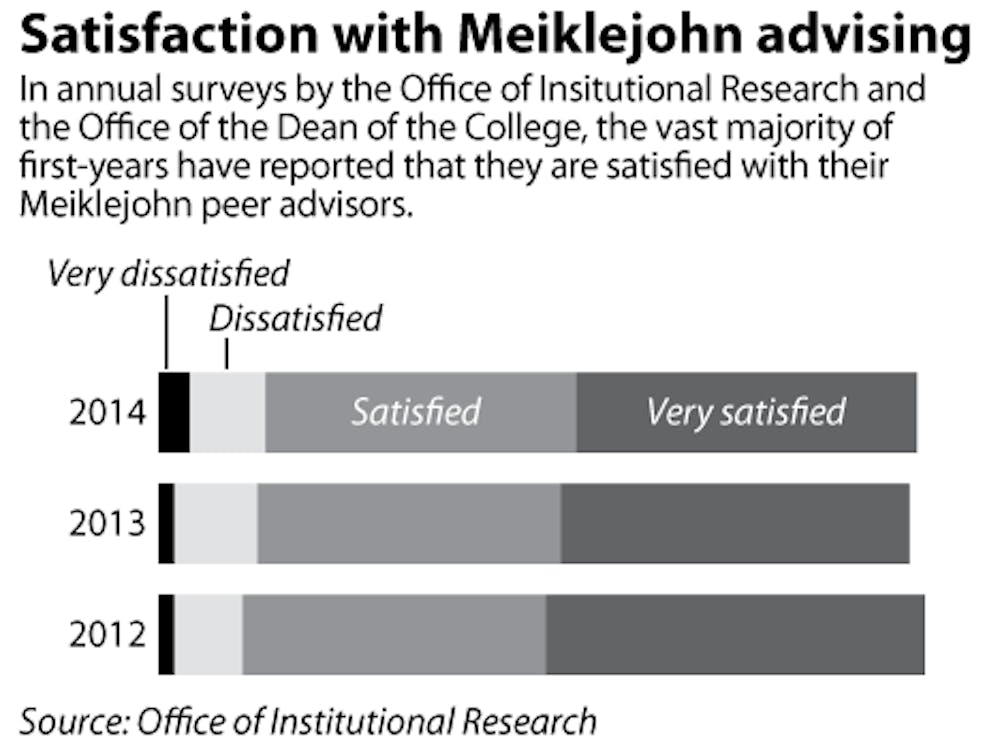Around 54 percent of students applying to be first-time Meiklejohn peer advisors were accepted into the program for the 2014-15 academic year, said Kayla Rosen ’14, a Meiklejohn Leadership Committee member, adding that this marks the lowest acceptance rate in years for which data is available.
Approximately 59 percent of “rookie” applicants were accepted in 2013, while 58 percent were accepted in 2011, Rosen said. No data was available for 2012.
Rosen attributed the lower acceptance rate this year to an “aggressive” advertising campaign. Unlike in past years, the Meiklejohn application went online before winter break so students had more time to fill it out, she said. Meiklejohns also reached out to several student groups and organizations — including the Residential Peer Leaders and the Third World Center — to boost interest, she added.
“We did everything more. We went in-person and gave a five-minute pitch to a lot of large lecture classes,” Rosen said.
Rookie and returning applicants must go through separate application processes, she said. Two leadership committee members interview each rookie candidate, while a third Meiklejohn leader reads his or her written application, Rosen said.
The 12-person leadership team then discusses all applicants as a group and reaches final decisions.
Ann Gaylin, associate dean of the College for first-year and sophomore studies, declined to release the size of this year’s rookie applicant pool, but she added that there was a “robust number of applicants.”
Though the applicant pool has remained roughly the same size over the years, too much attention has been focused on small variations in the applicant pool from year to year, Gaylin said.
“The pool size is where it should be,” she said. “There is no concern about the applicant pool.”
The number of rookie Meiklejohn applicants has declined each year over the last three years for which data is available, dropping from 517 applicants in 2010, to 492 applicants in 2011 to 470 applicants in 2012, The Herald previously reported.
Since not all applicants who receive acceptance emails decide to fill the position, Gaylin predicted that there will be 350 to 360 Meiklejohns next year, which she said would be slightly higher than normal.
Gaylin pointed to data from the Office of Institutional Research that shows the majority of first-years are pleased with their Meiklejohn advisor. Forty-five percent of first-years reported being “very satisfied” and 41 percent reported being “satisfied” with their Meiklejohn advisor this year, according to the Office of Institutional Research website. Last year, 46 percent of first-years reported being “very satisfied” and 40 percent reported being “satisfied.”
Rookie applicants may decide to apply because they were inspired by their own peer advisors during their transition to Brown.
“First-years respond when they had a fantastic Meiklejohn experience and want to pass that on,” Rosen said.

ADVERTISEMENT




